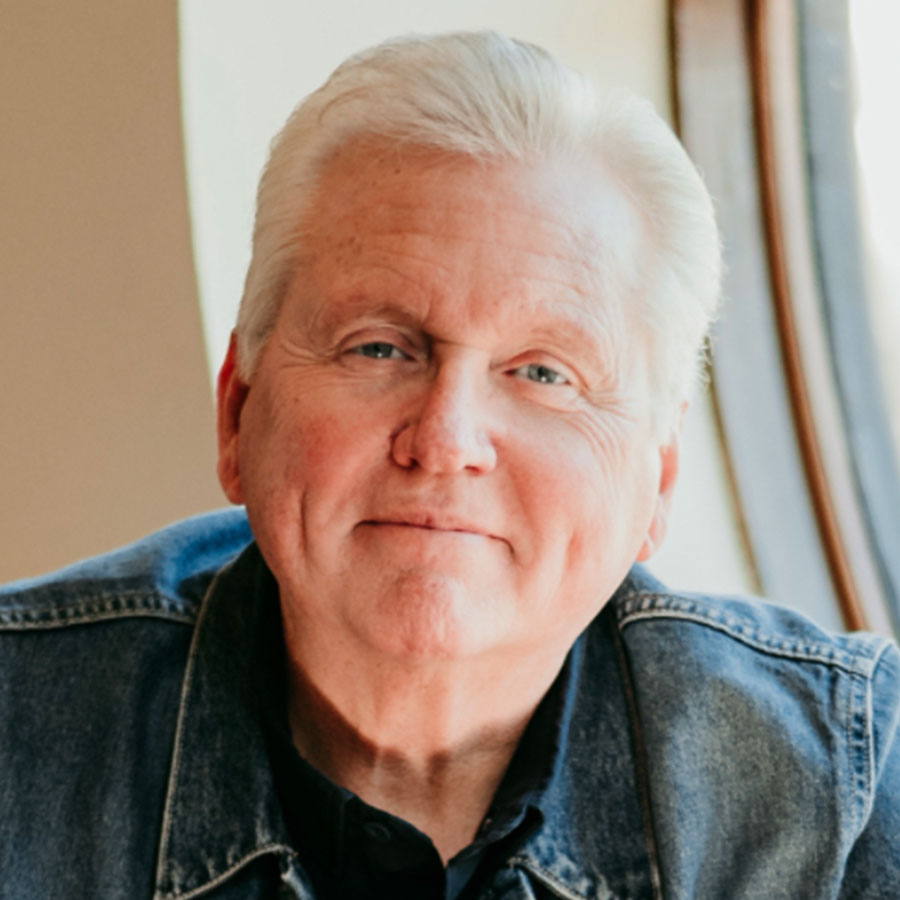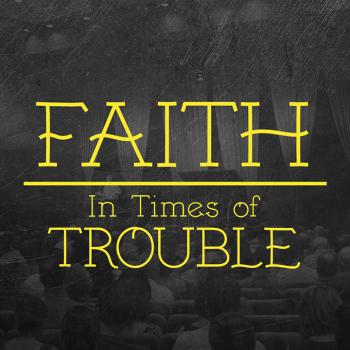
Credit: Anna Stills
Jesus cares about your trauma and He offers valuable and timely information to help those in need. In my previous articles, we explored the meaning of trauma and PTSD. In addition, we discussed the battle between a person’s trauma and their faith in God’s ability to fix it. Finally, we introduced the need for the third agent; a pastoral counselor or professional therapist. Today, we’ll take a look at how Jesus viewed a traumatized person. What’s more, we’ll see how all the things we’ve previously discussed occur – and Jesus will do the telling.
One of the best-known parables that Jesus told is a story about trauma
Jesus used stories to help his followers understand the life of faith. These stories are called parables. Parables are ordinary, earthly stories with a heavenly meaning. One of the best-known parables that Jesus told is a story about trauma. It’s found in Luke 10:25-37 and it is known as the story of The Good Samaritan. It’s fair to say that this story is most often seen from the perspective of the Samaritan. After all, his name is in the title. His response is compared to that of religious leaders. So it’s easy to focus on those characters and gloss over the trauma. But in reality, through this story Jesus is teaching about trauma and how we should respond to it.

Image © Jeff Preston from GoodSalt.com
…He wanted to test Jesus
It all began when a lawyer asked Jesus what he should do to inherit eternal life. It was not a sincere question and he was not an uninformed person. No, he had an ulterior motive. The Bible says that he wanted to test Jesus. Then, as today, some people did not believe in the supernatural: angels, demons, heaven, hell, etc. Perhaps this lawyer was one such person. On the other hand, Jesus taught about eternal life (John 3:16) and usually opened his stories by saying, “The kingdom of heaven is like…” He performed miracles and delivered “all who were oppressed of the devil” (Acts 10:38)
“And who is my neighbor?”
Knowing the lawyer’s motive, Jesus gave a legal answer. He asked, “What does the law say? How do you read it?” The lawyer replied, “Love the Lord your God with all your heart and with all your soul and with all your strength and with all your mind’; and, ‘Love your neighbor as yourself” (Deuteronomy 6:5). Jesus acknowledged that his answer was correct and encouraged him to do just that. Unable to trap Jesus with his first question, he went further into the matter. The text says that the lawyer wanted to “justify himself so he asked Jesus, ‘And who is my neighbor?’” He, of course, was looking for a legal definition. Instead, Jesus chose a story from his inner library to answer the lawyer’s question.

He began with an anonymous person; “ A certain man” (any one of us) who was walking from Jerusalem to Jericho. That trip was a distance of just less than twenty miles. The terrain is rugged and desolate. In addition, Jerusalem is located about 2,500 feet above sea level. Jericho is about 800 feet below sea level. His choice of cities and the journey between them is intentional and suggestive. Jerusalem is symbolic of all things peaceful. It represents a promise of an established life in the City of David. Jerusalem means, city of peace. It is a walled city with a temple for worship to the one true God. For some unknown reason, this man leaves it all. Why, we are not told, but we are told where he is going; Jericho.

Photo By: FaithND
If Jerusalem means city of peace and victory, then Jericho is a mix of promise and pain. It is the virgin city of Israel’s occupation of the Promised Land. The Jewish wanderers conquered this wicked city when the prostitute, Rahab helped save Israel’s spies. Jericho became the downpayment that would eventually lead to Jerusalem, the city of peace. However, this man is going backward, from Jerusalem to Jericho. Perhaps you too have felt like you were going backward.
But sometimes memories like these have the power to undo us.
This journey represents a life, yours or mine, and all of the history it embodies. We often take the mental journey backward, examining our mistakes and successes. There are pictures in our memory files that painfully remind us of broken relationships, inappropriate choices, insecurities, or career blunders. Most of the time, we simply compensate and brush these thoughts aside. But sometimes memories like these have the power to undo us.
We often find ourselves trying to navigate the barren highs and lows
However, no life is made only of painful things. There are also many successes and moments of genius glory. We gladly point out these high water marks, for friend and foe alike. “There!” we say, “Look what I’ve done. I have mattered. They needed me there!” Maybe it’s a brilliant investment or business move. Perhaps it’s a promotion or recognition for an achievement. In some ways, these high points are as difficult to navigate as the blunders. These two can fight in the back room of our minds like siblings, vying for attention. It is here, on this inward journey, that we often find ourselves trying to navigate the barren highs and lows of emotional time travel, just like the man Jesus described.
Then, like our Bible story friend, we are vulnerable.
Emotional trauma can set us on such a journey. At moments like this, it’s not uncommon to punish ourselves in some way. Or maybe it’s the opposite—maybe we think that we can fix it all. At times, these manic twins can throw the psyche into desperate agony or an unrealistically high assessment of ourselves. Then, like our Bible story friend, we are vulnerable.
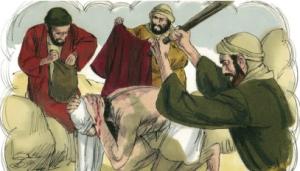
The account informs us that at some mid-point in the trip he is waylaid by thieves – wounded, stripped, and left for dead. This is an apt description of the times when demons and phantoms lurk in the dark corners of our minds, waiting to jump us when we take a mental journey backward. It is here that we find the thieves of self-doubt and insignificance, the raging fools that come running from behind some rock screaming, “Loser!” at the top of their lungs. These thieves hit us, yell at us, show up in our dreams, and try to take what is not theirs. They call us stupid for trying. Then they run off, counting their newfound loot and grinning with accomplishment at how easy it all was. The weary traveler is defenseless.
On the other hand, I guess we all travel the same back roads.
Sometime later, along comes a priest and a Levite. Two pretty important social figures that this lawyer can identify with. “By chance,” the Bible says, they come upon the wounded man, one at a time. The priest, probably on some official business, must follow what he perceives as a higher law since according to the law of Moses, touching a potentially dead man would leave him ceremonially unclean and disqualify him from performing his duties. So he conscientiously objects to the idea of enlisting in the war of human suffering and decides to steer clear of the problem. He goes to the other side of the road and passes by. The Levite, or lay minister, does the same. Who knows where these men are going? On the other hand, I guess we all travel the same back roads.
They are smart, professional, and morally correct, but they cannot help themselves.
These two men represent the best among us. They are religious and speak of everything wholesome and right in church. They are smart, professional, and morally correct, but they cannot help themselves. Their code is so full of twists and turns they cannot think of how to help without falling short somewhere else. They are conflicted. The priest’s decision reminds us that confusion is easy at times like this. We will most likely struggle with our values, and quite possibly make the wrong choice.
The story of the Good Samaritan reveals 3 steps for treating victims of trauma:
-
-
The Healing Encounter
-
The Healing Journey
-
The Healing Process
-
1. The healing encounter.
After these two have passed, along comes a Samaritan. From what we know, a Samaritan was a racially mixed and religiously confused person, who was despised and of little social significance. Typically, any Jewish person would avoid him. However, no one else is nearby and so he stoops down to help. Here is the neighbor that the lawyer asked about. But here also is where the healing begins. If the priest could not help his wrong decision, the Samaritan could not help his right one. Here, Jesus uses the unthinkable reference, a Samaritan, for himself and us. We can see him as he bends down and cradles the battered man in his arm while examining the wounds. The healing encounter is when we see the wounds in an honest light. This moment of confession comes with such grace!

Here at this encounter, the Samaritan pours his wine and oil on the beaten man’s wounds. The wine and oil were necessary provisions for his journey. Instead, he sacrifices them for this man he’d never met. Next, he covers the wounds with bandages. But where would he get these? He is not a traveling pharmacist. Most likely, he tears his clothes to make the bandage. Ironically, this is what the priest and Levite would typically do. It was a customary sign of grief when something horrible had happened. However, the priest did not tear his garment. Neither did the Levite. It was the Samaritan.

Credit: Harvard Health
His suffering qualified him to care.
From what we know about the first-century interracial policy, it is safe to place the Samaritan as the object of discrimination. He certainly had no status in Jewish culture. His social treatment mirrored the poor, beaten physical condition of this roadside victim. But his suffering qualified him to care. So it is with Jesus, and with us too. Our pain certifies us as able healers, menders of men. Only those who have suffered loss can truly comfort at a funeral. Only those whose hearts have been broken can share the grief of the divorced, their wound is still fresh in the soul. Others try, but only the wounded bind the wounds with understanding.
2. The healing journey.
This caring Samaritan now lifts the wounded man, places him on his beast, and heads down the road. Healing is a journey that sometimes involves intervention into very painful and self-destructive behavior patterns. These are very risky for the Samaritan and often rejected by the wounded. Especially those with Post Traumatic Stress Disorder who often try to stumble on and act like everything is okay. But things are not okay, and intervening is vital to health and recovery. Those first few bumpy steps can be hellacious for a suffering person. It is here that the emotions cry out to stop. Denial can look an awful lot like faith at this point, insisting that this can’t be right because it hurts too badly. But it is right, and it is essential to get the wounded off the road, though it seems easier to stay in the ditch.
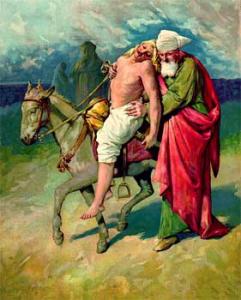
We do not know how far they went, but it was not back to Jerusalem or onward to Jericho. There is no need to go back to Jerusalem, riding high in the saddle. Neither is there a need to finish this cruel trip down memory lane to Jericho. Just get this broken man in a warm bed, in an inn, somewhere off the main path. Oh, the gracious blessing of counselors, ministers, and friends who themselves have been hurt. Oh, the silent love poured out by caregivers—Samaritans who counsel by the side of the road until the broken find haven. The New Testament books of Matthew, Luke, and John all marry the idea of healing and therapy.
3. The healing process
Then there must be time for the healing process – off the donkey and into the inn. Once there, the man from Samaria secures a room, checks in, and stays up all night with the wounded man. He takes him to the bathroom, brings him cold water, and changes the dressing on his wounds. This is not pleasant work, but that is not the point—it is vital work that must happen. People don’t do this because they get a kick out of it, they do it because they cannot be a party to the injustice by being a bystander in the face of suffering. The next morning, after a sleepless night, the Samaritan leaves ample cash for the wounded man’s care. By doing so, he is also a facilitator, putting contacts together so that healing can continue in his absence.
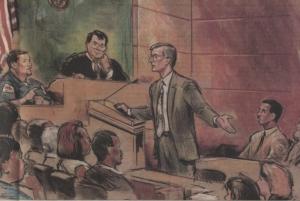
Photo by: Douglas Wood
In this parable, Jesus is both the Samaritan and the wounded man, as are we. The lawyer is in the unfortunate place of the priest and the Levite. He had asked Jesus “Who is my neighbor?” Jesus not only defined neighbor, but he also described how a neighbor responds in times of need. In doing so, Jesus showed the lawyer an ugly truth. Like the priest and Levite, he too was crossing the road to steer clear of true love.

“Are you hurting? Pray.”
The healer’s heart brings the comfort and strategy that is necessary for healing. Whether immediate or as part of a process, James gives clear guidance: “Are you hurting? Pray. Do you feel great? Sing. Are you sick? Call the church leaders together to pray and anoint you with oil in the name of the Master. Believing prayer will heal you, and Jesus will put you on your feet. And if you’ve sinned, you’ll be forgiven—healed inside and out.” (James 5:14-15).
Long before any of us knew about what trauma we might face, Jesus understood. His story to the lawyer and all of us is the same; when you find someone in trauma, stop and give all of the help you can. But his message is also to the person who has been traumatized. Jesus teaches like a skilled therapist that recovery involves a healing encounter, a healing journey, and a healing process. He doesn’t promise a quick fix. He tells the truth – exactly what we need,


